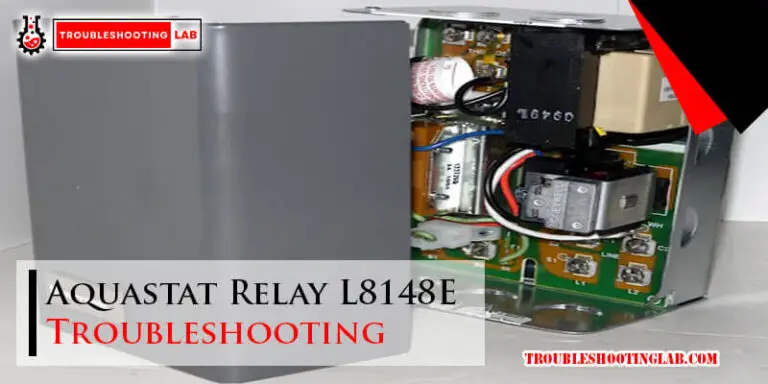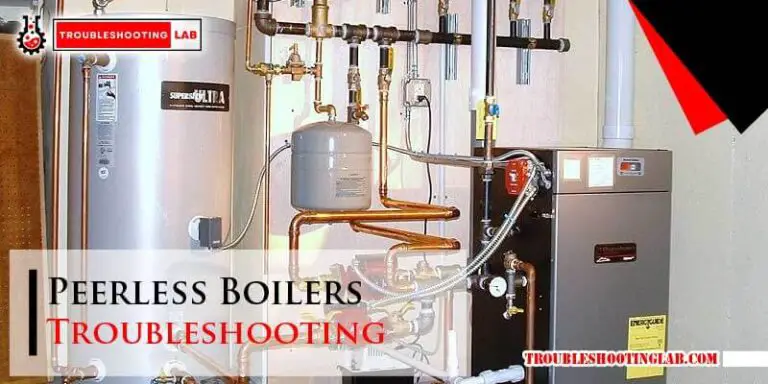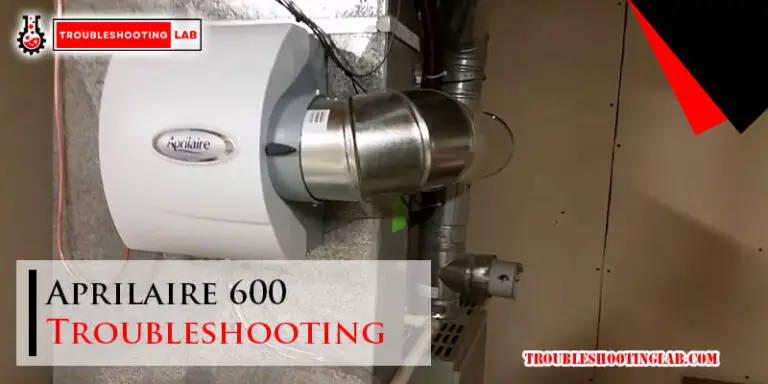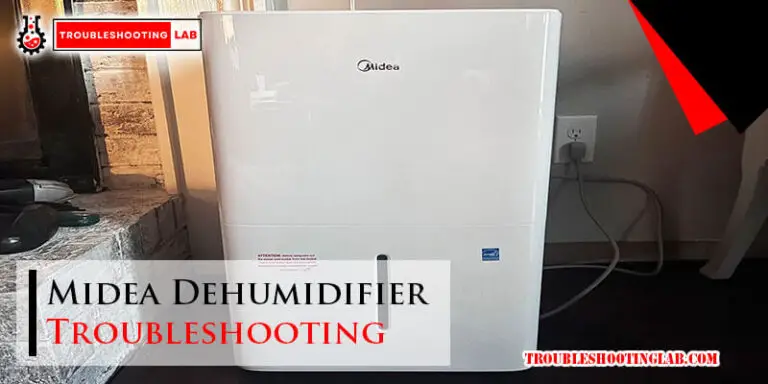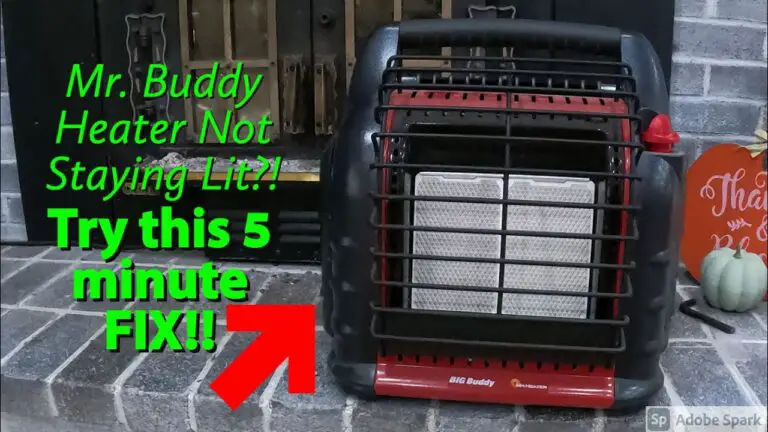Eemax Tankless Water Heater Troubleshooting: Quick Fixes
For Eemax tankless water heater troubleshooting, check power supply, thermistors, flow meter, and temperature controller. It could be several issues causing the problem, such as electric supply, water flow, temperature settings, or sediment buildup.
Proper troubleshooting is recommended. Tankless water heaters offer convenient and efficient hot water solutions, but like any appliance, they may encounter issues. Eemax tankless water heater troubleshooting is essential for identifying and resolving problems. Whether it’s a heating element malfunction or insufficient hot water, understanding the troubleshooting process can help ensure your water heater operates efficiently.
In this guide, we’ll explore the common problems that may arise with Eemax tankless water heaters and provide step-by-step troubleshooting tips to help you address these issues effectively.
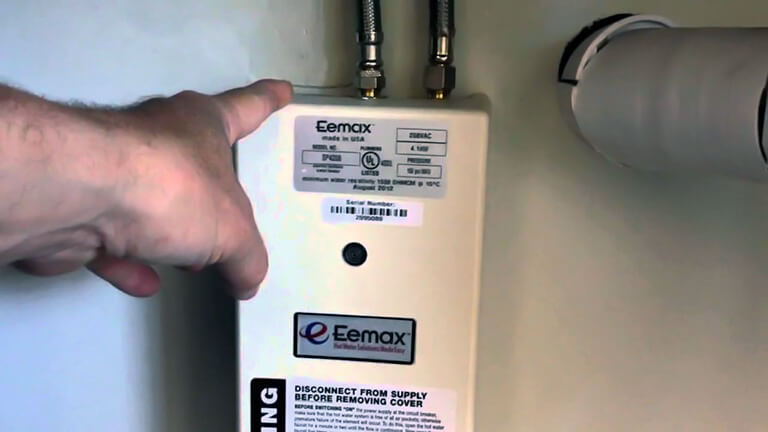
Introduction To Eemax Tankless Water Heaters
Explore advanced troubleshooting techniques for Eemax Tankless Water Heaters to resolve issues efficiently. Learn how to check power supply, thermistors, flow meter, temperature controller, and heating elements. Easily troubleshoot common problems like inadequate heating by following expert tips and resetting the device using the reset button located near the circuit board.
Eemax tankless water heaters are innovative, energy-efficient, and space-saving solutions for hot water needs. They heat water on-demand, eliminating the need for a bulky storage tank. Eemax tankless water heaters are designed to last longer, require less maintenance, and save you money on your energy bills. These water heaters are perfect for residential and commercial applications, providing endless hot water whenever you need it.
Benefits Of Using Eemax Tankless Water Heaters
Eemax tankless water heaters offer many benefits over traditional storage tank water heaters. Here are some of the top benefits of using Eemax tankless water heaters:
- Energy-efficient: Eemax tankless water heaters only heat water when you need it, saving you money on your energy bills.
- Space-saving: Eemax tankless water heaters are compact and take up less space than traditional storage tank water heaters.
- Endless hot water: Eemax tankless water heaters provide endless hot water, so you never have to worry about running out of hot water again.
- Longer lifespan: Eemax tankless water heaters are designed to last longer than traditional storage tank water heaters, which can save you money in the long run.
- Less maintenance: Eemax tankless water heaters require less maintenance than traditional storage tank water heaters.
Common Issues Faced By Users
While Eemax tankless water heaters are reliable and long-lasting, they may experience some common issues. Here are some of the common issues faced by Eemax tankless water heater users:
- No hot water: This could be due to various reasons, such as insufficient power supply, water flow, temperature settings, sediment buildup, or faulty heating elements.
- Low water pressure: This could be due to clogged screens, insufficient incoming water pressure, or undersized water lines.
- Fluctuating water temperature: This could be due to a faulty temperature sensor, loose wiring, or a malfunctioning control board.
- Ignition failure: This could be due to various reasons, such as insufficient gas supply, blocked venting, or a faulty igniter.
If you experience any of these issues, it is important to troubleshoot and resolve them promptly to ensure your Eemax tankless water heater continues to provide you with reliable hot water.
Initial Checks Before Troubleshooting
Before delving into Eemax tankless water heater troubleshooting, it’s crucial to perform initial checks. These checks can help identify common issues and potentially save time and effort in the troubleshooting process.
Verifying The Power Supply
Check if the tankless water heater is receiving adequate power supply. Ensure that the power source is connected and functioning correctly to avoid power-related issues.
Ensuring Proper Water Flow
Verify that there is consistent water flow to the tankless water heater. Inadequate water flow can lead to heating problems and affect the overall performance of the unit.
Resetting Your Eemax Water Heater
When your Eemax tankless water heater is not functioning as expected, performing a system reset can often resolve the issue. Resetting the water heater can help troubleshoot various problems and restore its proper functionality. It’s essential to understand the correct steps for safely resetting the system and know when a system reset is necessary.
Steps To Safely Reset The System
Before proceeding with the reset, it’s crucial to ensure the safety of the process. Here are the steps to safely reset your Eemax water heater:
- Locate the power source of the water heater.
- Switch off the power to the water heater from the power source.
- Wait for at least 5 minutes to allow the system to completely power down.
- After the waiting period, switch the power back on and observe the water heater’s response.
When To Consider A System Reset
Considering a system reset is necessary when you encounter any of the following situations:
- The water heater is not producing hot water despite adequate water flow and proper power supply.
- There is a sudden drop in water temperature during usage.
- Unusual error codes or system malfunctions are displayed on the water heater.
Addressing Water Heating Issues
When it comes to maintaining a consistent supply of hot water in your home, a tankless water heater plays a crucial role. However, issues can arise, leading to insufficient heating and other problems. In this guide, we’ll discuss troubleshooting tips to address water heating issues effectively.
Troubleshooting Insufficient Heating
If you’re experiencing inadequate hot water from your Eemax tankless water heater, several factors could be contributing to this issue. First, check the electric supply, water flow, temperature settings, and for sediment buildup. Additionally, inspect the heating elements, water pressure, sizing, insulation, and water demand. Regular maintenance is also essential for optimal performance.
Checking For Sediment Buildup
Sediment buildup can significantly impact the efficiency of your tankless water heater. It can lead to reduced heating capacity and affect the overall performance of the unit. To prevent this, consider flushing the system regularly to remove any accumulated sediment and ensure uninterrupted water flow.
Electrical Component Checks
When troubleshooting Eemax tankless water heaters, it’s crucial to conduct thorough electrical component checks to ensure optimal performance and safety. Let’s delve into the key aspects of electrical component checks, including testing heating elements and thermistors, as well as inspecting the circuit board and safety features.
Testing Heating Elements And Thermistors
When diagnosing issues with Eemax tankless water heaters, it’s essential to verify the functionality of the heating elements and thermistors. These components play a pivotal role in regulating water temperature and ensuring efficient operation. Here’s how to conduct the necessary tests:
- Use a multimeter to measure the resistance of the heating elements and thermistors.
- Compare the recorded resistance values against the manufacturer’s specifications to determine if the components are functioning within the acceptable range.
- If the readings deviate significantly from the specified values, it may indicate a faulty heating element or thermistor that requires replacement.
Inspecting The Circuit Board And Safety Features
Another critical aspect of Eemax tankless water heater troubleshooting involves inspecting the circuit board and ensuring the proper functioning of safety features. Here’s how to carry out this essential examination:
- Visually examine the circuit board for any signs of damage, such as burnt components or loose connections.
- Check the functionality of safety features, including high limits and pressure relief valves, to confirm that they are operating as intended.
- If any abnormalities or malfunctions are detected during the inspection, take appropriate measures to address the issues and restore the proper functioning of the circuit board and safety features.
Flow And Temperature Control
When it comes to troubleshooting your Eemax tankless water heater, it’s essential to understand the flow and temperature control mechanisms. Properly adjusting the water flow and calibrating the temperature settings can significantly impact the performance of your tankless water heater.
Adjusting Water Flow For Optimal Performance
Optimizing the water flow is crucial for the efficient operation of your Eemax tankless water heater. Here are some steps to adjust the water flow:
- Check for any obstructions or blockages in the water inlet filter.
- Ensure that the water supply valve is fully open to allow maximum flow.
- Verify that the water pressure meets the manufacturer’s recommended specifications.
- Clean the inlet filter regularly to prevent clogging and maintain smooth water flow.
Calibrating The Temperature Settings
Accurate temperature calibration is essential to ensure that your tankless water heater delivers hot water at the desired temperature. Follow these steps to calibrate the temperature settings:
- Use a thermometer to measure the temperature of the hot water at different faucets.
- Access the unit’s control panel to adjust the temperature settings according to your preferences.
- Refer to the manufacturer’s guidelines for precise instructions on calibrating the temperature settings.
- Regularly check and recalibrate the temperature settings to maintain consistent hot water delivery.
Maintenance Tips For Longevity
Proper maintenance is key to ensuring your Eemax Tankless Water Heater operates efficiently for years to come. By following a regular maintenance schedule and replacing parts as needed, you can prevent common issues and extend the lifespan of your unit.
Regular Maintenance Schedule
- Flush the system every 6-12 months to remove mineral buildup.
- Check for leaks and drips regularly to prevent water damage.
- Inspect the venting system for blockages or debris every few months.
Replacing Parts And Preventing Common Issues
- Replace the water filter every 3-6 months to maintain water quality.
- Clean the inlet filter screen to prevent clogs and ensure proper water flow.
- Inspect the heating elements for scale buildup and replace if necessary.
- Check the pressure relief valve for proper operation and replace if it shows signs of wear.
- Monitor the temperature settings to avoid overheating and potential damage.
Professional Help And Resources
If you are experiencing issues with your Eemax tankless water heater, don’t worry, there are resources available to help you troubleshoot and resolve the problem. While some issues may require the expertise of a professional, others can be fixed with a bit of DIY troubleshooting. In this section, we will explore when to call a professional for help and online resources available for Eemax users.
When to call a professional for help
If you are experiencing any of the following issues with your Eemax tankless water heater, it is recommended that you seek the help of a professional:
- No hot water
- Inconsistent water temperature
- Strange noises
- Leaks
- Error codes
Calling a professional can be beneficial as they have the knowledge and expertise to diagnose and fix the problem quickly and effectively. Additionally, they can provide regular maintenance and ensure your tankless water heater is running efficiently.
Online resources and support for Eemax users
As an Eemax user, there are several online resources available to help you troubleshoot and resolve issues with your tankless water heater. Here are a few online resources to consider:
- Eemax website: The Eemax website has a troubleshooting section that provides step-by-step instructions on how to troubleshoot and fix common issues with their tankless water heaters. Additionally, they have a FAQ section that answers frequently asked questions.
- YouTube: YouTube is a great resource for visual learners as it provides video tutorials on how to troubleshoot and fix issues with Eemax tankless water heaters. There are several channels dedicated to tankless water heaters, such as Hubbell Water Heaters and electronicsNmore, that provide detailed tutorials on how to troubleshoot and fix issues.
- Online forums: Online forums such as Reddit and HVAC-Talk have discussions on Eemax tankless water heaters and troubleshooting. These forums are a great place to ask questions and get advice from other Eemax users and professionals in the industry.
By utilizing these online resources and seeking professional help when needed, you can ensure your Eemax tankless water heater is running efficiently and effectively.
Frequently Asked Questions
How To Reset A Tankless Water Heater?
To reset a tankless water heater, locate the high limit thermostat near the circuit board. Press the small red button to reset the safety feature.
Why Is My Electric Tankless Water Heater Not Getting Hot Enough?
If your electric tankless water heater isn’t hot enough, check the power supply, water flow, temperature settings, and heating elements. Sediment buildup, water pressure, sizing, insulation, and maintenance could also be factors. Troubleshoot these areas to identify and resolve the issue.
If needed, consult a professional for assistance.
Where Is The Reset Button On An Eemax Tankless Water Heater?
The reset button on an EEMAX tankless water heater is located near the high limit thermostat. It’s a small red button on a black device with two orange wires. Press it to reset the safety feature.
What Is The Life Expectancy Of A Eemax Water Heater?
The life expectancy of an EEmax water heater is approximately 20 years with proper maintenance.
Conclusion
Troubleshooting Eemax tankless water heaters involves checking power supply, thermistors, flow meter, and heating elements. Additional steps may include testing voltage, ohms, and other components for proper functionality. Following a systematic approach can help resolve heating issues efficiently. Remember to refer to manufacturer guidelines for specific troubleshooting instructions.

